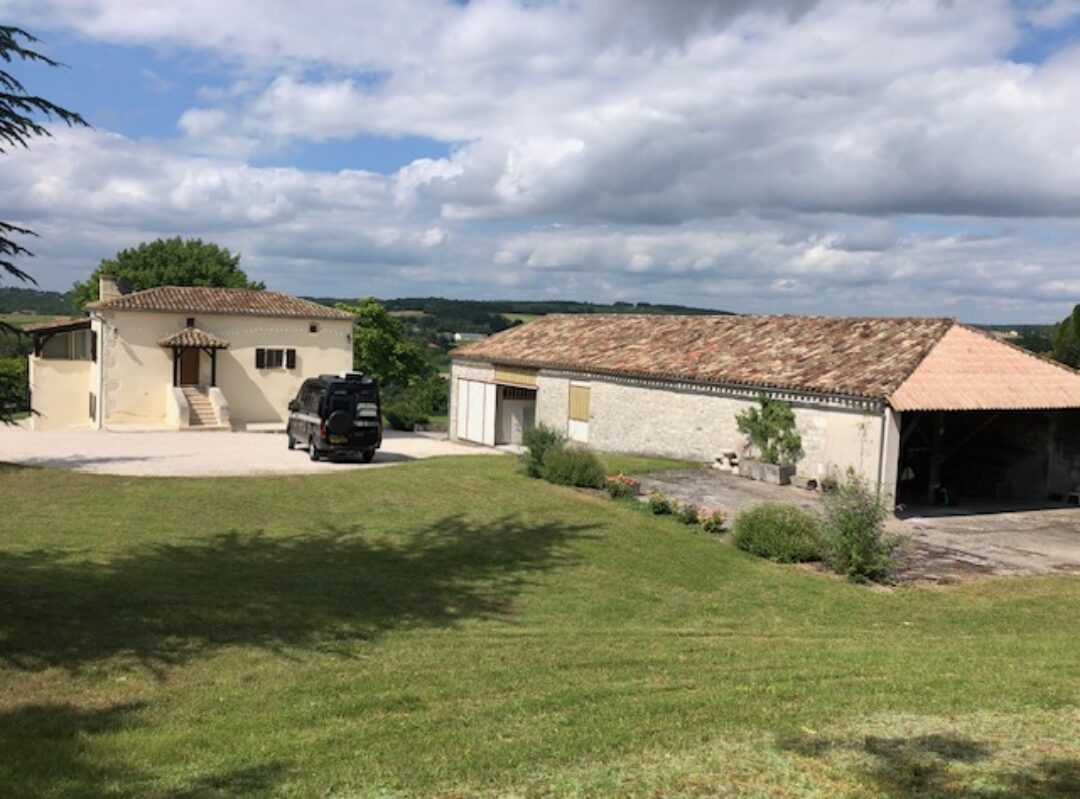This week we moved on to Figeac, the second largest town in the Lot department and situated on the River Célé at the eastern extremity of the department.
Our campsite is a short bicycle ride from the centre of town, on the river Célé next to a leisure park and kayaking area. We’re not looking at the river from our pitch but it’s a very open and green site. It does feel as if a switch was thrown at the end of last week as there is a marked difference in the number of people around, now that the French have gone back to work and the children back to school. The campsite is probably only 25% occupied so we have plenty of space to ourselves. We saw one other English couple here on one day, otherwise it’s just us flying the flag amongst all French neighbours. Fortunately the weather switch hasn’t been thrown so we’re still enjoying lovely temperatures and blue skies, even if it’s a bit nippier overnight.
Figeac is another medieval town with lots of characterful half-timbered or wattle and daub buildings. The centre features about 3 main squares with grand ‘maisons’ and ‘hotels’. The main square – Place Champollion – houses a large covered market place and is named after Figeac’s most notable son, Jean François Champollion, reputed to be the founder of Egyptology and the person who cracked how to read hieroglyphics. There’s a museum in town named after him and a small tucked away square – Place des Écritures– featuring a large tablet sculpture covered in hieroglyphics – a reproduction of the Rosetta Stone. The windows of the three storey museum now have metal inserts with hieroglyphics but I think we’ll need to see it illuminated to fully appreciate it.



Saturday is market day and it is spread through most of the town, so it felt like the largest market we had visited, but perhaps it’s just more spread out at present to ensure distancing. It certainly made for a lively day in town and cafés and restaurants must be glad of the business. At the top of the town, a church – Notre-Dame-du-Puy de Figeac – dominates the view and features a very colourful altar in walnut wood with a side chapel with a statue of Saint Jacques de Compostelle.


We also happened upon two much smaller and unusual museums – one open and the other not. The first was the Paulin Ratier museum, featuring the work of Paulin Ratier and the Ratier factory based in Figeac (from the 1920s to this day) which designed and made aircraft propellers and also designed bicycles, a motorbike and the Citroënette, a children’s scale model pedal car. The second museum, ‘Musée de la résistance et de la déportation’ presents information about the history of Figeac during the Second World War, the occupation by Nazis and the round up of inhabitants in 1944. Curiously, the two museums are tenuously linked as one of the reasons for the large occupation presence in Figeac was the presence of the Ratier factory which was making propellers for Luftwaffe aircraft during the war.

A day out in the Corrèze
Claire is involved in an Anglo-French exchange group between Brits in the Tunbridge Wells area and French hosts in Cestas, just south of Bordeaux. A fellow committee member and her husband, Ros and Frank, are at their holiday home about 1.5 hours north us and kindly invited us to have lunch with them. We took the campervan and followed a lovely route through the three departments of the Lot, Cantal (well known for its cheddar-like cheese) and into the Corrèze. Lots of hamlets and villages on the way including Laroquebrou with its beautiful chateau which has an almost fairytale like path leading up to it.
We met Ros and Frank in Argentat on the eastern part of the Dordogne river. Although we had directions for where to meet in the old town, we would have been able to find them simply by following the accordion music coming from a café near the church – Frank is a wonderful accordion player. Argentat is a lovely town, once important for transporting goods including wood on the traditional wooden gabares to Bordeaux. The architecture in the Corrèze is quite different, in particular the roofs of the houses which are tiled with slates (ardoises), often scalloped, or stone tiles (lauzes). It gives many of the houses a ‘Hansel and Gretel’ feel.



From Argentat we travelled to Ros and Frank’s house for a wonderful lunch in the garden – Frank’s walnut bread and basil ice cream being standout items. We also had time for a walk to a nearby viewpoint – very different scenery to the Lot with tree covered hills and valleys. Our route back was equally as scenic via Beaulieu-sur-Dordogne and with plenty of other hilltop chateaux to see including Saint Laurent des Tours. Thanks to Ros and Frank for a delightful day.



Wonderful blue skies, Claire.
I am enjoying travelling with you. Thank you for the detailed reports and beautiful photos.
I am joining the Francophiles at Mount Edgecumbe tomorrow so will raise a glass to your remaining travels.
Love Mary
Thanks Mary. Great to see that the Francophiles are able to meet in person again. Please say hello to everyone from me and enjoy your evening. C x
It was lovely to see you, Claire and Joe, and show you our corner of the little-known Corrèze. Your travels are taking you to some amazing places!
We arrived home in the U.K. this morning, and are now officially in quarantine. Enjoy the rest of your holiday!
Glad you’re back safely Ros. Thanks again for a great time and we’ll definitely be exploring the Corrèze further. Hope you can keep busy in quarantine! x